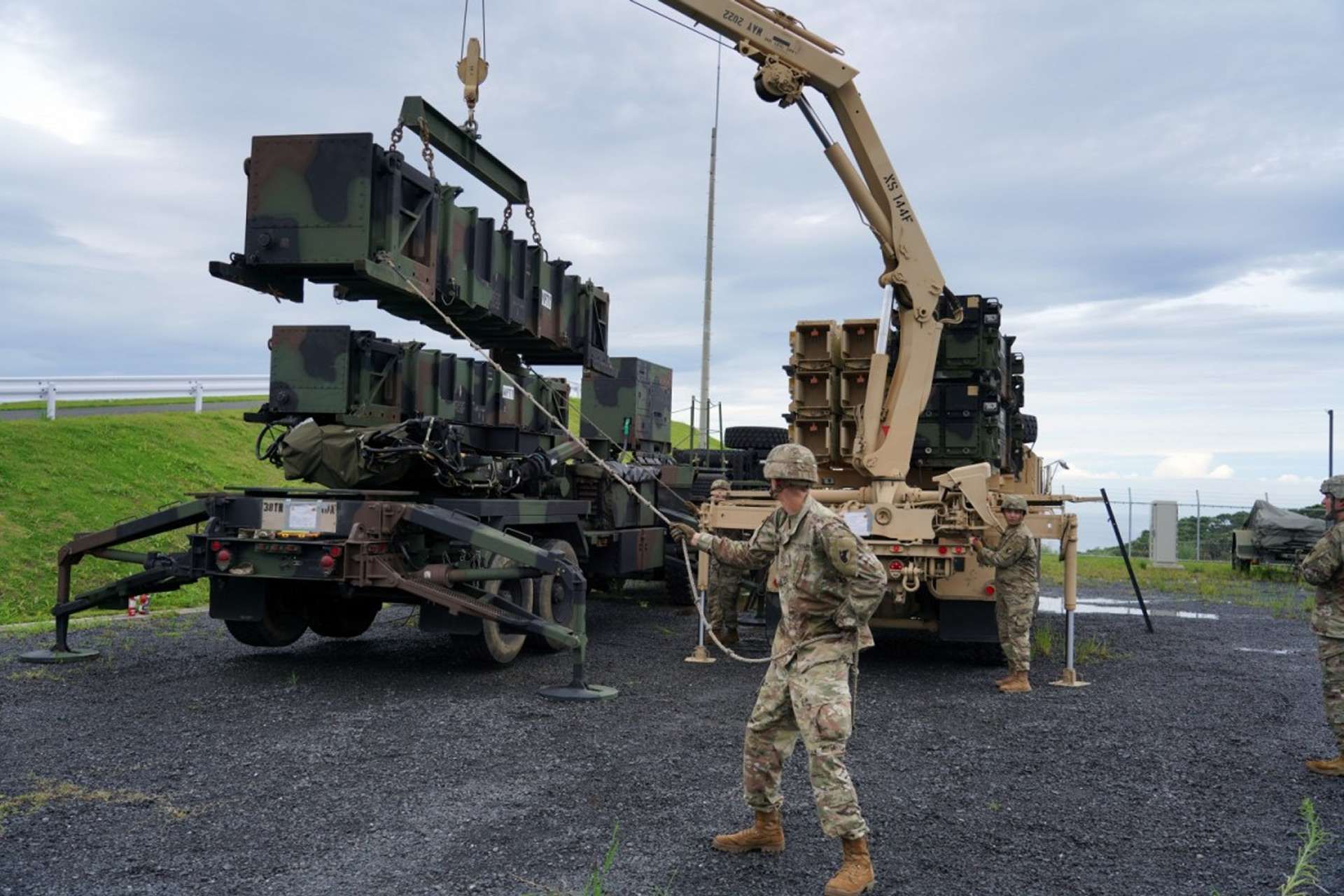Breaking News
Japan to Supply Patriot Missiles to United States.
Japan has agreed to sell an undisclosed number of Patriot missiles to the United States for 3 billion yen ($19 million) to help replenish American stockpiles depleted by efforts to bolster Ukraine's air defenses. This transaction follows a request from the Biden administration and was formalized seven months after Japan's initial decision to assist.
Follow Army Recognition on Google News at this link

Patriot PAC-3 battery in Okinawa, Japan. (Picture source: US DoD)
An official from Japan's Acquisition, Technology & Logistics Agency (ATLA) announced the agreement on July 28, 2024, without specifying the number of missiles involved. However, a former Pentagon official familiar with the negotiations indicated that around 10 missiles would be transferred. These will be standard PAC-3 missiles, according to ATLA.
The Patriot missile, whose name means "Phased Array Tracking Radar to Intercept on Target," is renowned as the most sophisticated air defense system in the U.S. Army. It can detect and neutralize incoming missiles and is produced in the United States by RTX (formerly Raytheon Technologies) and Lockheed Martin, with radar and ground systems made by RTX and interceptor missiles by Lockheed Martin.
In Japan, Mitsubishi Heavy Industries manufactures about 30 Patriot missiles annually for the Air Self-Defense Force (ASDF), which currently has three variants: PAC-2, PAC-3, and the advanced PAC-3 MSE (Missile Segment Enhancement). The advanced PAC-3 missile is valued at approximately $4 million, with the MSE variant offering up to a 50% extended range.
The Patriot PAC-3 is a long-range, all-altitude, all-weather air defense missile system. Designed by the United States, this missile is used by many countries, including Germany, Israel, Japan, Kuwait, the Netherlands, Poland, Qatar, Romania, South Korea, Sweden, Ukraine, the United Arab Emirates, and the United States.
The PAC-3 missile measures approximately 5.2 meters (17 feet) long and weighs about 700 kg (1,540 lbs) at launch. It has an operational range of 20 to 35 km (12 to 22 miles). Unlike many other missiles, the PAC-3 uses a hit-to-kill approach for destroying its targets, not having an explosive warhead. It relies on the kinetic energy generated by the impact to destroy its targets, propelled by a solid rocket motor to a top speed of Mach 5, approximately 3,836 mph (6,173 km/h).
To ensure optimal accuracy, the PAC-3 is equipped with an active radar seeker located in the nose of the missile, allowing it to autonomously track and engage targets. This guidance system is supplemented by mid-course updates provided by a ground-based radar and the missile's onboard inertial navigation system. The radar associated with this system is the AN/MPQ-65, which plays a crucial role in target detection and tracking.
The Japanese Ministry of Defense stated that the PAC-3 missiles sold to the United States would not be provided to non-U.S. government entities and will be used to replenish U.S. stockpiles. This was confirmed during a "two plus two" meeting of foreign and defense ministers in Tokyo, where the United States and Japan also agreed to expand the coproduction of PAC-3 MSE and initiate the coproduction of the advanced medium-range air-to-air missile.
The ministers emphasized in a joint statement the "critical" demand for these weapons and the high priority of joint coproduction efforts. They also agreed to establish a new U.S. joint force headquarters to oversee security activities in and around Japan.


























